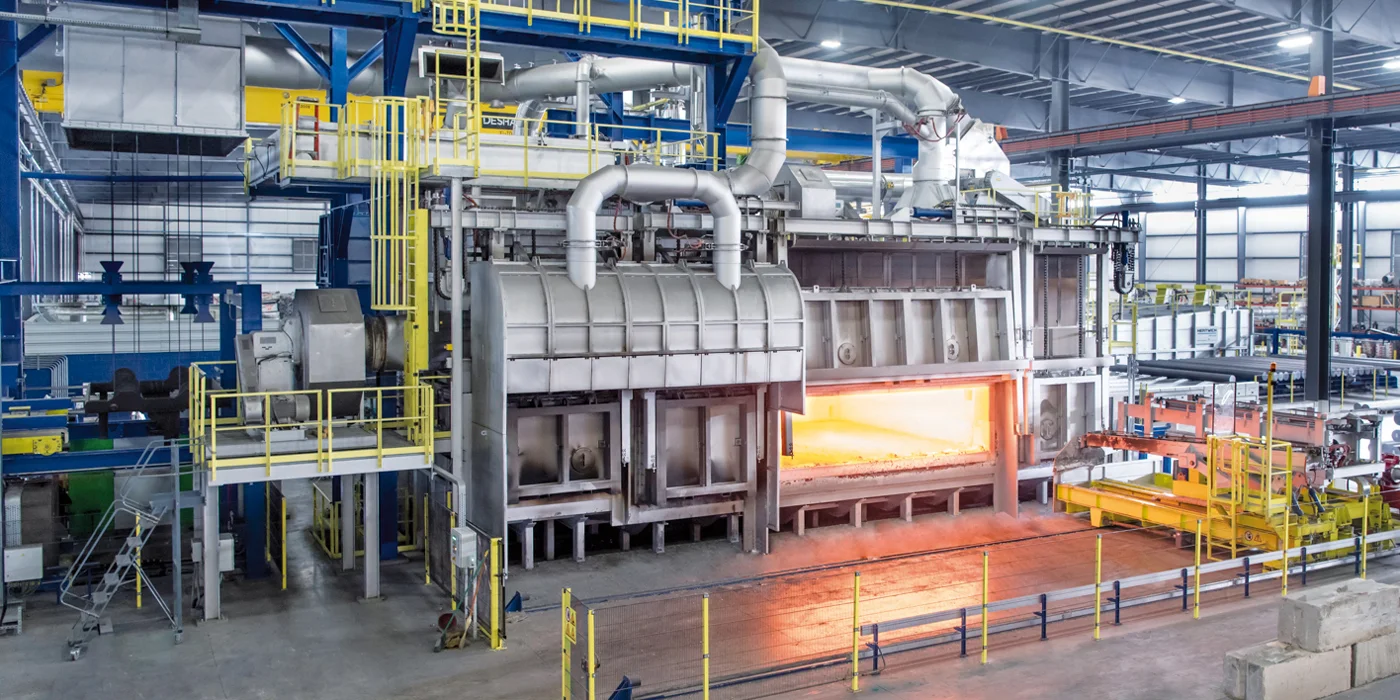As the core equipment in aluminum production, the working environment of the aluminum melting furnace extends far beyond the melting point of molten aluminum (660°C). In actual production, the furnace temperature needs to be maintained between 800°C and 1200°C. Liquid aluminum and its alloying elements possess extremely high permeability and chemical reactivity. This means that a scientifically sound and professionally configured refractory material system plays a crucial role. It directly determines the furnace’s operating efficiency, energy consumption, molten aluminum quality, and overall production costs—a key system in this process.

3 Main Types of Aluminum Melting Furnace

Horizontal Aluminum Melting Furnace
Furnace Type: Cuboid
Features: There are dead corners at the four corners of the furnace chamber, with large metal loss and uneven temperature of molten aluminum.
Temperature: Flue gas discharge temperature is 700-800℃.
Maintenance: Medium repair or major repair is required within 1-2 years. The furnace door and its surrounding areas often need minor repairs, with a high maintenance frequency.

Vertical Aluminum Melting Furnace
Furnace Type: Cylinder
Features: Fast heat transfer in the furnace chamber, uniform temperature of molten aluminum, and high thermal efficiency.
Maintenance: Low daily maintenance workload, low maintenance cost, and long interval between medium repair or major repair.

Regenerative Aluminum Melting Furnace
Furnace Type: Cylinder
Features: A vertical furnace and air system are added, flue gas waste heat is fully recovered, with small heat loss and low energy consumption.
Maintenance: Low daily maintenance workload and long maintenance interval.
Detailed Refractory Configuration for Aluminum Melting Furnace
Here we take a regenerator aluminum melting furnace as an example to introduce its refractory material configuration.
| Area | Working Layer | Refractory Products |
| Furnace Bottom | Working Layer l=300mm | Non Stick Refractory Castable |
| Working Layer l=80mm | Special Refractory Castable | |
| Insulation Layer l=130mm | Insulation Castable | |
| Chamber Slag Line Wall | Liquid Level Above 300mm to Liquid Level Line L=230mm when Discharging 30T Aluminum Liquid | Non Stick Refractory Castable |
| Side Wall | Working Layer l=230mm | Non Stick Refractory Castable |
| Impermeable Layer l=80mm | Special Refractory Castable | |
| Insulation Layer 120mm | Insulation Castable | |
| Upper Wall Layer | Working Layer l=230mm | Refractory Castable |
| Insulation Layer l=115mm | Mullite Insulation Brick | |
| Insulation Layer l=105mm | Insulation Castable | |
| Insulation Layer l=50mm | Alumina Silicate Fiber Blanket | |
| Furnace Top | Working Layer l=230mm | Refractory Castable |
| Insulation Layer l=100mm | Insulation Castable | |
| Insulation Llayer l=50mm | Alumina Silicate Fiber Blanket | |
| 300mm | Refractory Anchor Brick | |
| Furnace Door | Working Layer l=175mm | Wear Resistant Castable |
| Insulation Layer l=75mm | Alumina Silicate Fiber Blanket | |
| Measuring Well | Working Layer | Non Stick Refractory Castable |